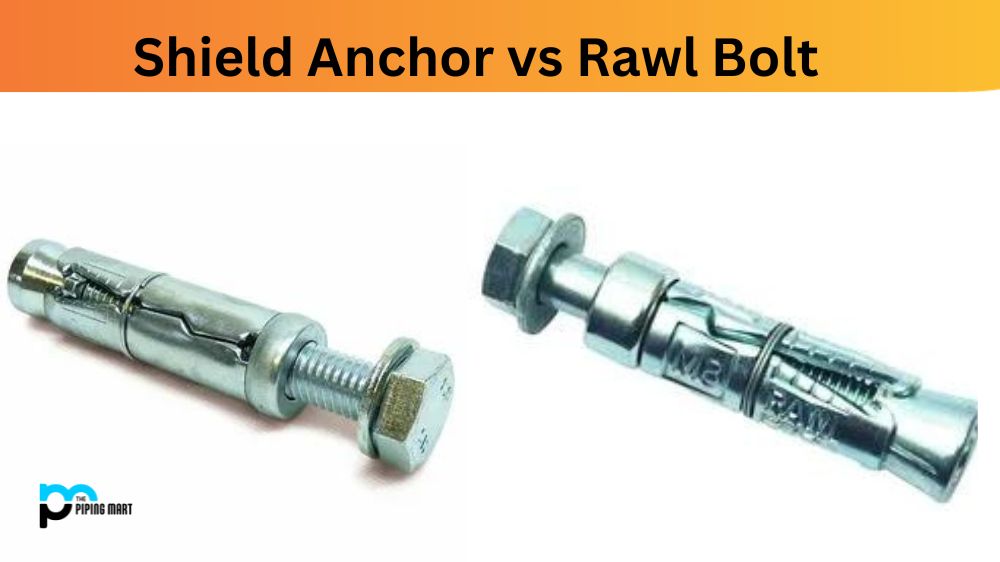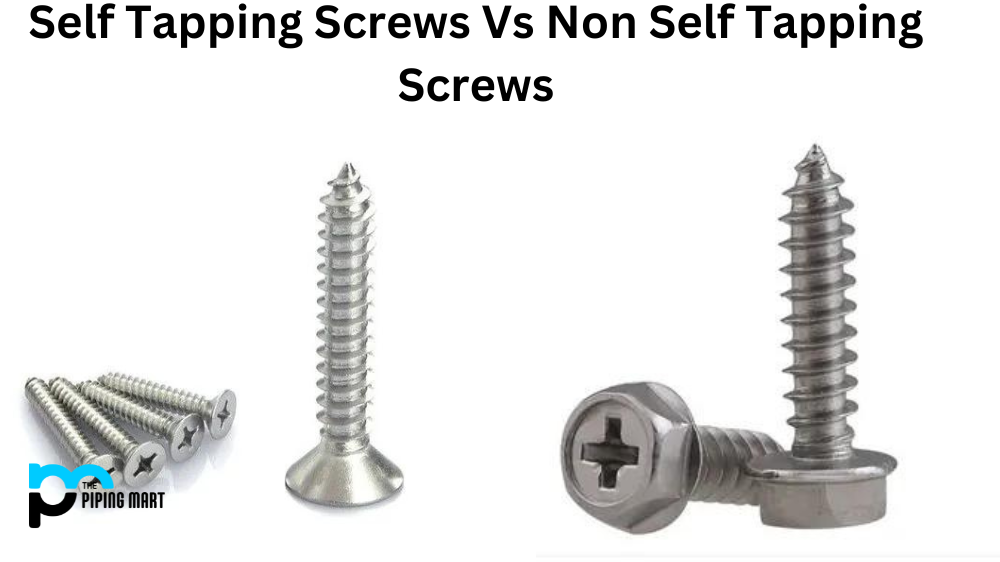Hanger bolts are one of the most versatile fasteners available. They combine the features of a wood screw and a machine screw, making them incredibly strong and secure. If you’re looking for an all-purpose fastener for your project, hanger bolts should be your go-to choice. Let’s take a closer look at hanger bolts, how they work, and why they are so popular among DIYers and professional contractors.
What is a Hanger Bolt?
A hanger bolt is a double-ended screw with two different threads. One end is designed similarly to a lag thread, while the other is designed like a machine thread. This unique design makes hanger bolts ideal for joining two pieces of material together, such as wood or metal, and in applications where adjustable parts are required because the lag thread can be securely tightened into one piece of material. In contrast, the machine thread allows for easy adjustment in another material.
Hanger Bolt Sizes
Hanger bolts come in various sizes ranging from 3/8 inch to 1/2 inch in diameter and from 1/2 inch to 6 inches in length. The lag thread portion of the bolt will typically have a smaller diameter than the machine thread portion. It is also important to note that hanger bolts have no head – which means there is no visible part indicating which way it should be installed – but instead have a square shoulder below each threaded end that acts as its head. Once installed correctly, this shoulder prevents any further turning into dense materials such as hardwoods or metals.
How Do You Install Hanger Bolts?
Installing hanger bolts is relatively easy thanks to their unique double-threaded design – though there are some tips you should follow when installing them into hardwood or metal materials. First, you should pre-drill holes slightly larger than the diameter of the lag portion of your hanger bolt into both pieces of material being joined together before attempting to install them with either a wrench or drill driver bit, depending on whether you’re using a manual or power tools, respectively. Once you’ve drilled your holes, start by lightly lubricating each bolt with wax or oil before inserting it into one side and then threading it through the second side until it has been fully inserted and tightened securely into both pieces of material without overtightening since this may cause damage to either side due to its hardwood or metal composition. Once done properly, your hanger bolt should sit flush against the surface without any visible heads showing on either side – leaving only its square shoulder exposed underneath each threaded end for added security against further rotation after the installation has been completed correctly.
Hanger Bolt Uses
Hanger bolts are fasteners with a lag screw thread at one end and a bare machine bolt thread at the other. They help allow for easy and secure installation of furniture, racks, and similar hardware to walls or other surfaces. A key advantage to opting for hanger bolts over other styles is the ability to quickly mount and remove components and how firmly they hold up under tension with the lag screw head. Hanger bolts suit many different needs, from a simple coat rack install to suspending industrial-weight items such as support beams in archways or doorways. Depending on the needs of each project, hanger bolts come in various sizes and grades that can tackle any job, large or small.
Hanger Bolt Properties
- Hanger bolts fasten wood or metal to a wall.
- They have a large, flat head that helps to distribute the load evenly.
- The shank of a hanger bolt is threaded and can be screwed into a pre-drilled hole.
- Hanger bolts are available in a variety of lengths and diameters.
- They are typically made from steel or stainless steel for durability.
Hanger Bolts Dimensions
| Diameter & Thread Pitch
|
Standard Length (C) | Machine Thread Length (A) | Lag Thread Length (B) | Center Space (D) |
| 6-32 |
5/8 | 1/4 | 3/8 | – |
| 3/4 | 3/8 | 3/8 | – | |
| 7/8 | 1/4 | 5/8 | – | |
| 1 | 3/8 | 5/8 | – | |
| 8-32 | 5/8 | 1/4 | 3/8 | – |
| 3/4 | 3/8 | 3/8 | – | |
| 7/8 | 1/4 | 5/8 | – | |
| 1 | 3/8 | 5/8 | – | |
| 1-1/4 | 5/8 | 5/8 | – | |
| 1-1/2 | 5/8 | 7/8 | – | |
| 1-3/4 | 3/4 | 1 | – | |
| 2 | 1 | 1 | – | |
| 10-24 | 1 | 3/8 | 5/8 | – |
| 1-1/4 | 5/8 | 5/8 | – | |
| 1-1/2 | 5/8 | 7/8 | – | |
| 1-3/4 | 3/4 | 1 | – | |
| 2 | 1 | 1 | – | |
| 2-1/2 | 1 | 1-1/2 | – | |
| 3 | 1-1/2 | 1-1/2 | – | |
| 3-1/2 | 1-1/2 | 2 | – | |
| 1/4-20 | 1 | 3/8 | 5/8 | – |
| 1-1/4 | 5/8 | 5/8 | – | |
| 1-1/2 | 5/8 | 7/8 | – | |
| 1-3/4 | 3/4 | 1 | – | |
| 2 | 1 | 1 | – | |
| 2-1/4 | 1 | 1-1/4 | – | |
| 2-1/2 | 1 | 1-1/2 | – | |
| 2-3/4 | 1-1/4 | 1-1/2 | – | |
| 3 | 1-1/2 | 1-1/2 | – | |
| 3-1/2 | 1-1/2 | 2 | – | |
| 4 | 2 | 2 | – | |
| 4-1/2 | 1-1/8 | 3 | 3/8 | |
| 5 | 1-3/8 | 3 | 5/8 | |
| 6 | 1-1/2 | 3 | 1-1/2 | |
| 5/16-18 | 1-1/2 | 5/8 | 7/8 | – |
| 1-3/4 | 3/4 | 1 | – | |
| 2 | 1 | 1 | – | |
| 2-1/4 | 1 | 1-1/4 | – | |
| 2-1/2 | 1 | 1-1/2 | – | |
| 2-3/4 | 1-1/4 | 1-1/2 | – | |
| 3 | 1-1/2 | 1-1/2 | – | |
| 3-1/2 | 1-1/2 | 2 | – | |
| 3-3/4 | 1-3/4 | 2 | – | |
| 4 | 2 | 2 | – | |
| 4-1/2 | 1-1/8 | 3 | 3/8 | |
| 5 | 1-3/8 | 3 | 5/8 | |
| 5-1/2 | 1-1/2 | 3 | 1 | |
| 6 | 1-1/2 | 3 | 1-1/2 | |
| 3/8-16 | 1-1/2 | 1/2 | 1 | – |
| 2 | 1 | 1 | – | |
| 2-1/2 | 1 | 1-1/2 | – | |
| 3 | 1-1/2 | 1-1/2 | – | |
| 3-1/2 | 1-1/2 | 2 | – | |
| 4 | 2 | 2 | – | |
| 4-1/2 | 1-1/8 | 3 | 3/8 | |
| 5 | 1-3/8 | 3 | 5/8 | |
| 5-1/2 | 1-1/2 | 3 | 1 | |
| 6 | 1-1/4 | 3 | 1-3/4 | |
| 8 | 2-1/2 | 3 | 2-1/2 | |
| 10 | 2-1/2 | 3 | 4-1/2 | |
| 12 | 2-1/2 | 3 | 6-1/2 | |
| 14 | 2-1/2 | 3 | 8-1/2 | |
| 1/2-13 | 3 | 1 | 2 | – |
| 3-1/2 | 1-1/2 | 2 | – | |
| 4 | 2 | 2 | – | |
| 5 | 2 | 3 | – | |
| 6 | 2-1/2 | 3 | 1/2 | |
| 8 | 2-1/2 | 3 | 2-1/2 | |
| 10 | 2-1/2 | 3 | 4-1/2 | |
| 12 | 2-1/2 | 3 | 6-1/2 |
Conclusion:
In conclusion, if you’re looking for an all-purpose fastener that combines the strength and durability of both wood screws and machine screws, then hanger bolts are your go-to choice! Their unique double-threaded design makes them perfect for use when joining two pieces of material together such as wood or metal – as well as in applications where adjustable parts are required due to their ability to easily adjust between two pieces without overtightening causing damage to either side due to their hardwood or metal composition once properly installed flush against surfaces without any visible heads showing on either side thanks to their square shoulders acting as their heads underneath each threaded end! For these reasons – along with many others – DIYers and professional contractors rely on hanger bolts whenever possible!

A passionate metal industry expert and blogger. With over 5 years of experience in the field, Palak brings a wealth of knowledge and insight to her writing. Whether discussing the latest trends in the metal industry or sharing tips, she is dedicated to helping others succeed in the metal industry.





